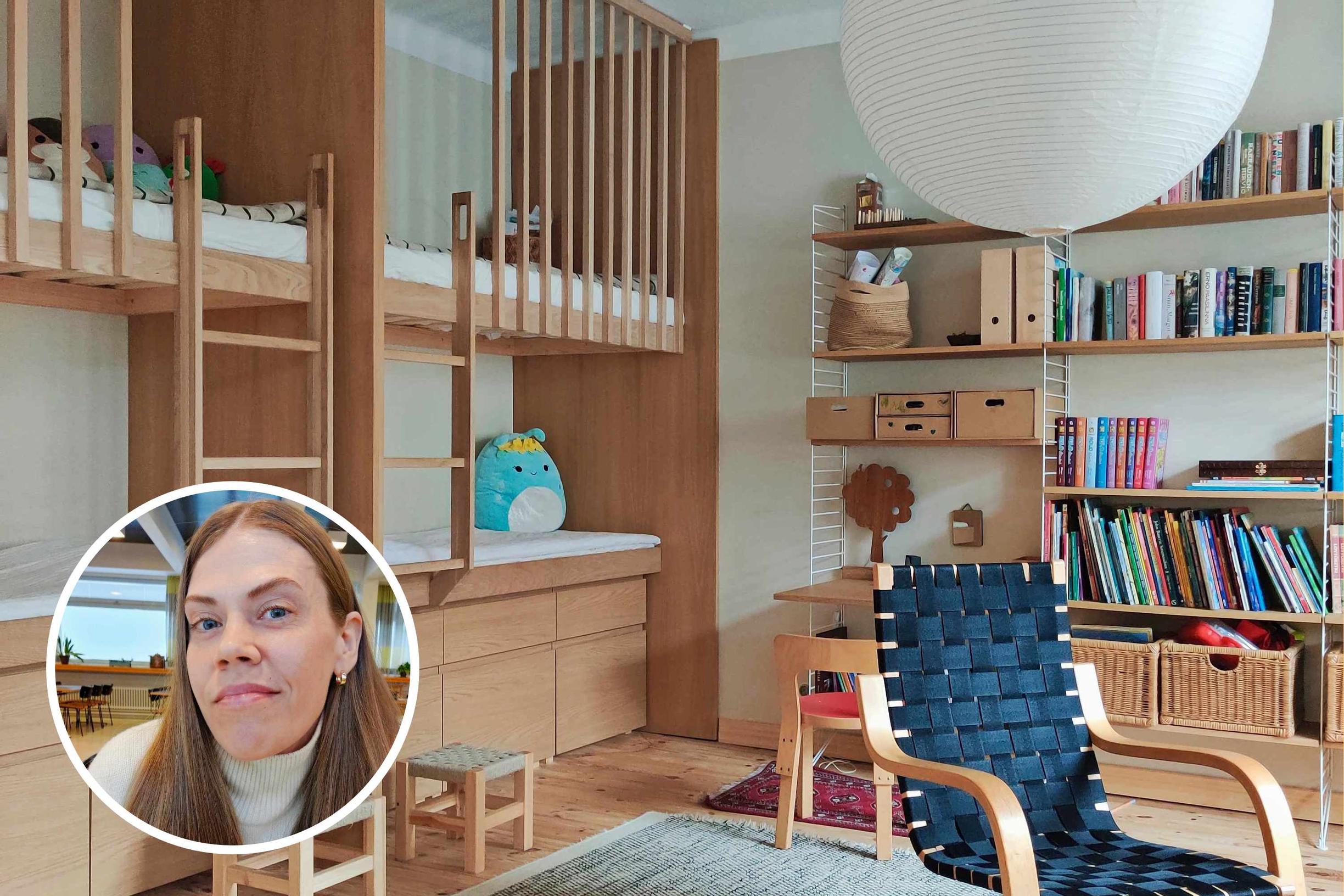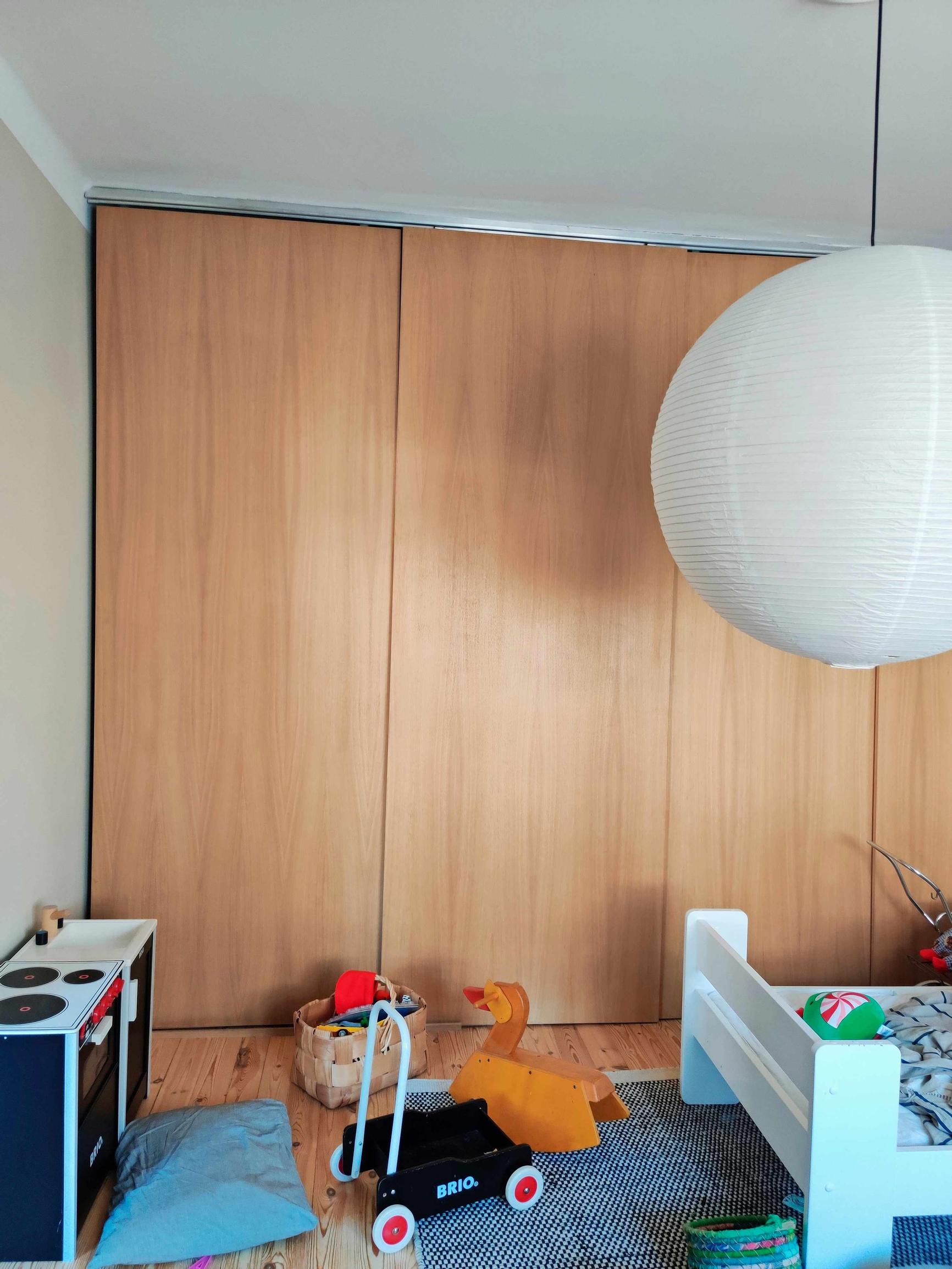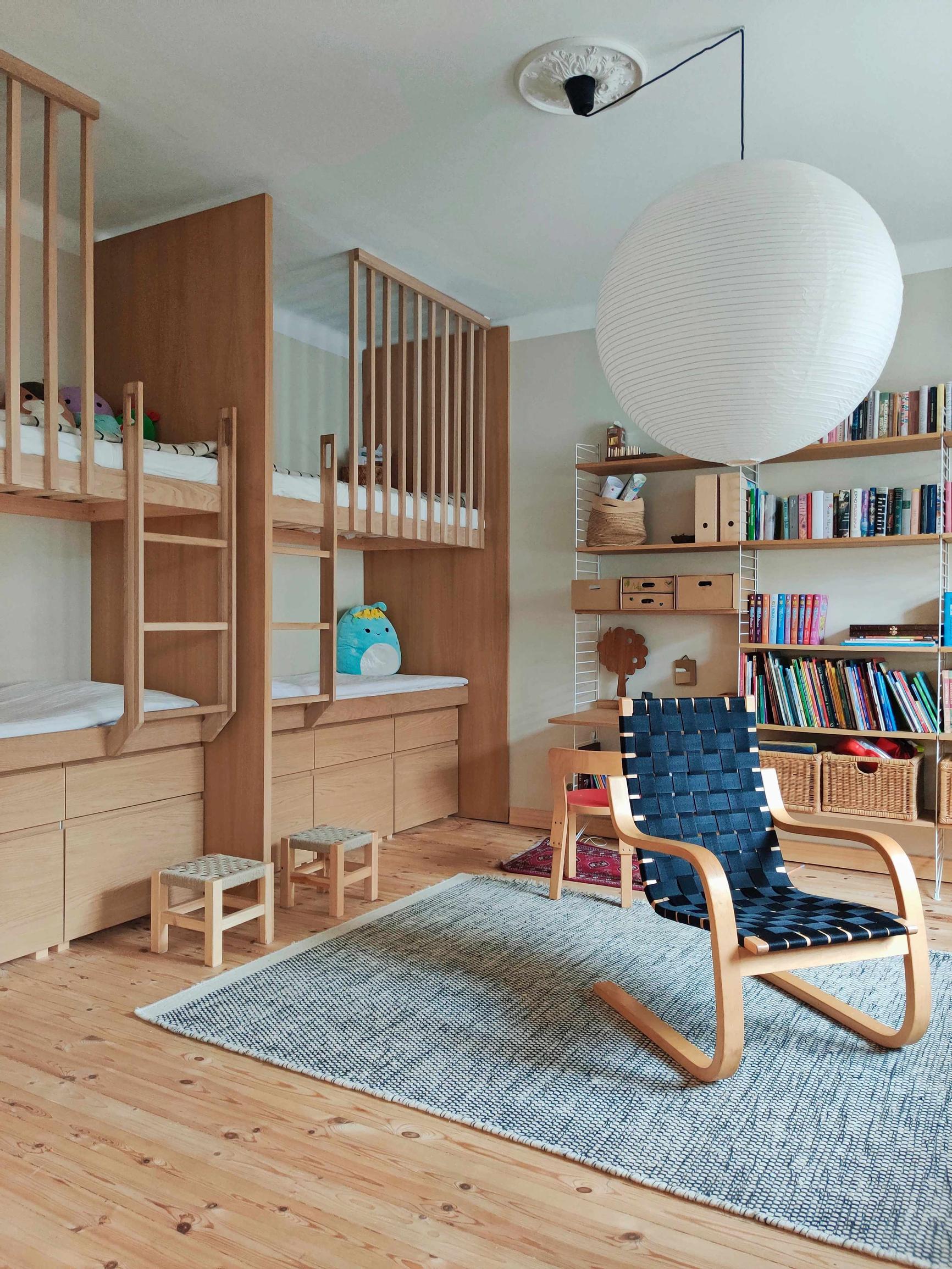
Should kids have their own rooms? Blended family’s four children share one space—and a four-person bunk bed!
Raisa and her partner built a bunk bed in the shared kids’ room for the blended family’s four children. In a shared room, the step-siblings bonded quickly.
On a Thursday in May 2024, I got a shocking message from my partner in the middle of my workday. I had assumed they were at the doctor for a routine check-up. During the appointment, my partner learned they had cancer.
Over the following weeks, we waited for the prognosis and the start of treatment in a surreal state. One thing, however, became crystal clear: we would move in together as soon as possible.
We had been dating for about three years, living separately just a few blocks apart. Each of us had a two-room apartment where we lived with our two children.
I resisted the idea of moving in together for a long time because our everyday life worked so well. I loved spending time at home with my kids, just the three of us, and I also loved having sleepovers with our entire crew.
On the other hand, I had always dreamed of having one big family under the same roof someday. My partner’s illness reminded me, in a clichéd way, that it might not be wise to postpone your most important dreams.
A couple of days after the diagnosis, we went to a Swedish furniture giant to look at kitchen cabinets, but not for our own kitchen. We had an idea that would let our six-person family fit into a two-room apartment.
There was one small catch to moving in together: both my partner and I owned our apartments. We didn’t want to waste time trying to sell them in the current uncertain market. We would move into my place, and my partner’s apartment would be rented out furnished.


We sat on the floor in my kids’ room with a pen and paper. My partner sketched a plan for a fixed four-child bunk bed.
My home is in a 1920s stone building in Helsinki’s eastern downtown. I originally moved there with my children’s father. We eventually separated, and I bought the apartment for myself.
Like many homes from that era, mine has three rooms that are almost the same size: a kitchen, a living room, and a bedroom. My partner and I sleep in the living room alcove.
The spacious bedroom was already the kids’ room. Our plan was simple: we’d build a fixed bed there. That way, each child would have their own space in the bed, and the floor would be completely open for play.
My partner and I like to experiment. The kids didn’t oppose the idea; in fact, they were thrilled about a bed that reminded them of a cabin on the ferry to Sweden.
“On the first night, the kids naturally had a quick, efficient spat over who would sleep where.”
We got good news about my partner’s prognosis. By the end of summer, we were able to put our plan into action.
We tore down the built-in wardrobe that spanned the entire room. Using its parts and new kitchen cabinets we purchased, we built the bunk bed. The deep kitchen drawers hold plenty of items.
Our final task was taking two separate beds out of the kids’ room for recycling and moving the two children’s mattresses, which had been on the floor, up into the bunk. On the first night, the kids naturally had a quick, efficient spat over who would sleep where.
After that, each child seemed satisfied with their spot. Our children are 10, 9, 6, and 5 years old. They argue about Lego pieces and half-finished games, almost never about space.
“Apparently, having more than two children in the same room is practically a child welfare issue.”
According to online discussions, every child definitely needs their own room. And having more than two children in the same space is supposedly almost grounds for child protective services.
I find that viewpoint amusing. I can instantly think of five more likely causes of trauma for my kids than sleeping in a custom bed finished by a carpenter.
Still, established housing norms do influence how I think. Whenever I tell someone new that six of us live in a two-room apartment, I always add that the kids’ room is huge. I even mentioned it at the beginning of this piece. The room is well over ten square meters (over 100 sq ft)! We haven’t just crammed the kids into a tiny box!
Legally, there are no regulations that dictate how we choose to live. But we do have a strong social and cultural norm that each child should have their own room, says architect Sanna Meriläinen, who specializes in the history of housing.
That norm isn’t very old. In the early 1900s, even wealthy urban families usually had just one children’s room for multiple kids, Meriläinen explains.
Photographs of grand apartment buildings from the late 1800s and early 1900s show that many rooms were meant for adult socializing.
“You can see it in the names of the rooms. A home might have had, for example, a salon, a gentlemen’s room, a dining room, and a parents’ bedroom. Then behind the kitchen were the smaller rooms: the servant’s quarters and the nursery.”
“Separate rooms didn't truly become the norm until the 1960s and ’70s, when suburbanization began and apartment sizes grew.”
A home wasn’t the family’s private space but instead a place to host important guests.
In the early 1900s, though, working-class families in cities often lived in tight quarters, like a single room with a stove. Even if they had large families and small homes, they usually took in lodgers too.
Over time, living in cramped conditions became a concern. In the modern era, people started to believe that family members needed their own personal spaces for moral and hygiene reasons.
“Architecture guides from the 1930s and ’40s describe the ideal home: the kitchen and bedrooms should be separate, and every resident should have private space.”
In reality, this ideal still wasn’t met in the 1950s, because apartments were cramped and families were large following the postwar baby boom.
Separate rooms didn’t truly become the norm until the 1960s and ’70s, when suburbanization began and apartment sizes grew. Improving living standards and smaller families also contributed to the shift.
“It’s a completely different decision to have separate rooms to two children versus eight.”


The norm of having one’s own room is still quite strong, says Meriläinen.
“People justify moving by saying they need just one more room. In other words, families are willing to relocate for that reason alone.”
Our culture values privacy. We rarely stop to think about what that separation from the family does to a child hidden away in their own room. What if they feel lonely in there?
I also asked a child psychiatrist what it means for a child not to have their own room but to share with a sibling. The answer was that it may mean nothing. Private space doesn’t need to be a full room.
That’s encouraging, because urban living is actually a global megatrend. But families who move to cities for work might not find a suitable home if the norm insists every child must have a separate room.
“When different norms clash, people start juggling them. A family may wonder if it’s really that important to gain more space, given how much time they spend together.”
“We probably bonded as a family quicker precisely because no one had the chance to shut themselves behind a door.”
Recently, we’ve seen multiple stories in the media about people who feel stuck in ownership apartments of the wrong size because of the unusual housing market conditions.
I’m not trying to belittle anyone’s problems. Living in an owner-occupied home of your own choosing isn’t the worst fate. Still, from the start we assumed we’d eventually move into a bigger place, which helped us adjust.
We made sure each child had personal space by agreeing no one could enter someone else’s bunk without permission. Everyone’s treasures—like key collections and jewelry—stay in their own drawers under the bed.
Our kids are with us half the time; the other half, they’re in their other homes. So our situation is different from families who share a small space full time. My partner and I can tidy up or enjoy intimacy when the kids are away.
My favorite moments are the evenings on switch-over days, when the kids arrive. Then I often see the sweetest sight: four little backs lined up around the Lego table. Nobody’s rushing off to do their own thing.
We probably bonded as a family quicker precisely because no one could shut themselves behind a door. Spending time together feels especially precious when a serious illness was what initially pushed us to move.
Yes, a shared kids’ room can be challenging if two school-age children get home at one in the afternoon and bring friends over all day. But neither of our older two has complained. If necessary, they split up: one group in the kids’ room, the other in the living room. Some friends and activities are shared by everyone.
And our kids do have other homes. My nine-year-old sometimes invites friends for a “solo sleepover” at our place on weekends when the rest of the kids are away. It’s especially important to them that their own biological little brother isn’t there. But they’ve happily invited their stepsister to sleep over at their other home.
Before long, though, we’ll have teenagers in the house. Teens need more space—at least emotionally—than small children do. If a teen can’t get that in our little home, they might prefer to hang out elsewhere. Let alone invite friends over.
That’s why we’ll almost certainly move one day. After all, some of the best moments in everyday life are the evenings when our kids’ friends stay for dinner after playing.
Raisa’s 3 tips for creating personal space
- If a child doesn’t have their own room, provide a dresser, a shelf, or an under-bed box for personal treasures like special rocks, diaries, and other important items.
- Agree on when your child can invite friends for a sleepover without siblings around. Or let the teenager know when they can have the entire place to themselves for an evening or at least a couple of hours.
- Think about how shared-room sleeping arrangements can be set up so that no one can peek into someone else’s bunk from their own. That boosts the sense of privacy.


